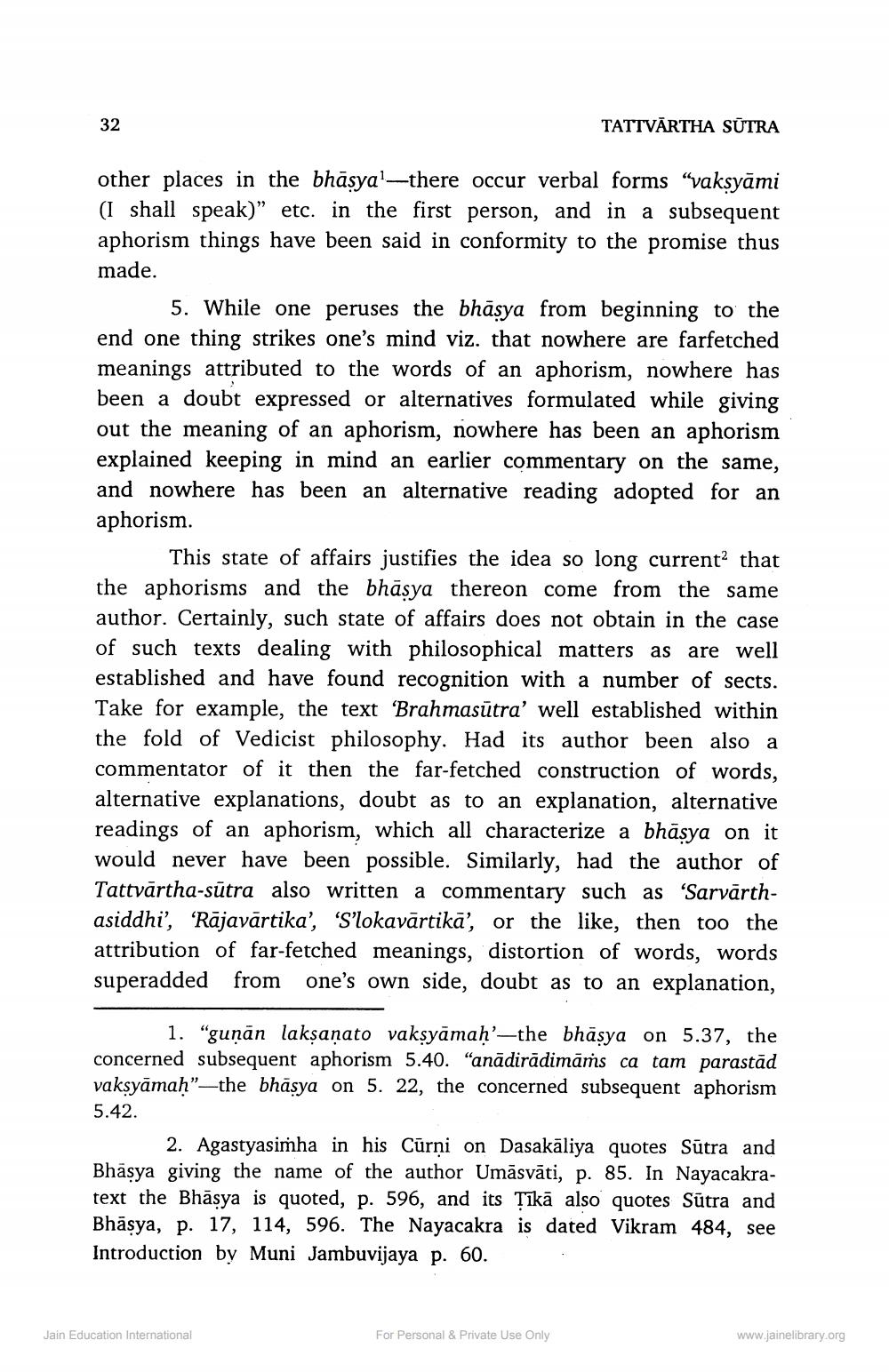________________
32
TATTVĀRTHA SŪTRA
other places in the bhāsya'—there occur verbal forms "vaksyāmi (I shall speak)” etc. in the first person, and in a subsequent aphorism things have been said in conformity to the promise thus made.
5. While one peruses the bhāsya from beginning to the end one thing strikes one's mind viz. that nowhere are farfetched meanings attributed to the words of an aphorism, nowhere has been a doubt expressed or alternatives formulated while giving out the meaning of an aphorism, nowhere has been an aphorism explained keeping in mind an earlier commentary on the same, and nowhere has been an alternative reading adopted for an aphorism.
This state of affairs justifies the idea so long current? that the aphorisms and the bhāsya thereon come from the same author. Certainly, such state of affairs does not obtain in the case of such texts dealing with philosophical matters as are well established and have found recognition with a number of sects. Take for example, the text 'Brahmasūtra' well established within the fold of Vedicist philosophy. Had its author been also a commentator of it then the far-fetched construction of words, alternative explanations, doubt as to an explanation, alternative readings of an aphorism, which all characterize a bhāsya on it would never have been possible. Similarly, had the author of Tattvārtha-sūtra also written a commentary such as “Sarvārthasiddhi', 'Rājavārtika', 'S'lokavārtikā', or the like, then too the attribution of far-fetched meanings, distortion of words, words superadded from one's own side, doubt as to an explanation,
1. "gunan laksanato vaksyāmah'—the bhāsya on 5.37, the concerned subsequent aphorism 5.40. "anādirādimāṁs ca tam parastād vaksyämah"—the bhāsya on 5. 22, the concerned subsequent aphorism 5.42.
2. Agastyasimha in his Cūrni on Dasakāliya quotes Sūtra and Bhäsya giving the name of the author Umāsvāti, p. 85. In Na text the Bhāșya is quoted, p. 596, and its Tīkā also quotes Sūtra and Bhāsya, p. 17, 114, 596. The Nayacakra is dated Vikram 484, see Introduction by Muni Jambuvijaya p. 60.
Jain Education International
For Personal & Private Use Only
www.jainelibrary.org




